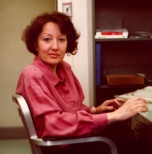1Institute of Physics, National Academy of Sciences, 46 Prospect Nauki, Kiev, 03039 Ukraine,
2Zhytomir State Pedagogical University, 40 Velyka Berdychivska St., Zhytomir, 10008 Ukraine, and
3Institute of Theoretical and Experimental Biophysics, Russian Academy of Sciences, Pushchino, Moscow Region, 142290 Russia
e-mail: tdyukova@mail.iteb.ru
